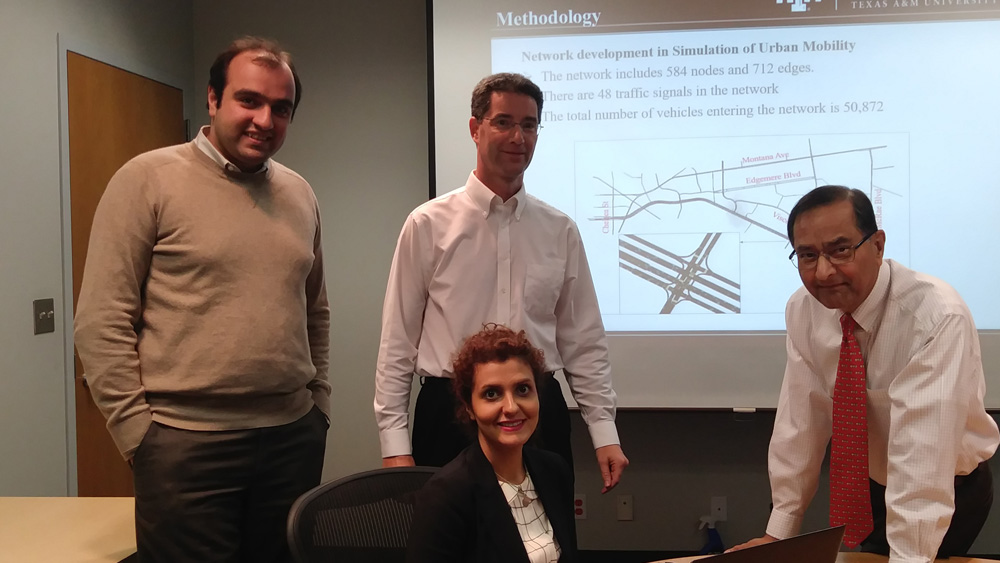
Despite ongoing advancements in the transportation industry, traffic congestion continues to be one of the more frustrating facets of driving. However, a team of researchers
Dr. Mark Burris, the Herbert D. Kelleher professor in the Zachry Department of Civil Engineering at Texas A&M University, collaborated with Dr. Alireza Talebpour, an assistant professor in the department, Arezoo Samimi, Burris’ civil engineering graduate student and Dr. Kumares Sinha, a distinguished civil engineering professor from Purdue University. Their research on the impact of connected vehicle technology on network-wide traffic operation and fuel consumption was awarded the best paper award at the 2018 American Society of Civil Engineers’ (ASCE) International Conference on Transportation and Development.
“My research focused on transportation engineering, and the research piece we did is trying to predict how travel may change once our vehicles are connected vehicles,” said Burris. “This is probably the next small step in the evolution of transportation, where vehicles talk to each other and talk to the infrastructure.”
The Hagler Institute for Advanced Study at Texas A&M funded this research project and was instrumental in bringing Sinha to collaborate with the research team. The funding allowed for complete flexibility on the research topic and the group of researchers found a commonality in their interest for connective vehicles and their impact on traffic flow.
“Our goal was to show what impact this may have, and if we’re showing positive impacts, then we want to encourage politicians and auto manufacturers to get this technology on the street as soon as they can so we can enjoy the benefits that we predict will occur,” said Burris.
The research concentrated on vehicles receiving information wirelessly regarding congestion ahead of the driver, then giving the driver a suggested
“We tried to add some intelligence into our model that thinks about how people will respond,” said Burris. “A lot of studies just assume that if your vehicle says it’s a shorter time then everyone will take the shorter route, and people don’t do that in real life, some people ignore it.”
According to Burris, the research is unique because it was conducted on such a large traffic area, and by using a microsimulation model they tried to integrate realistic data of people’s decisions in accepting the vehicle’s suggestions. The model was constructed in accordance
“Even though we used the A&M high-performance computer lab, it still took days to run some of the simulations,” said Burris.
Burris said that he was happy to have received this honor from the
“It does help validate what we are doing as an important next step in connected automated vehicles,” said Burris.